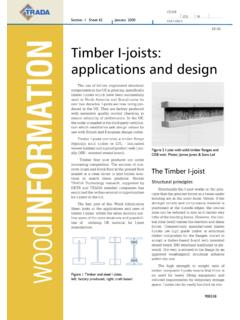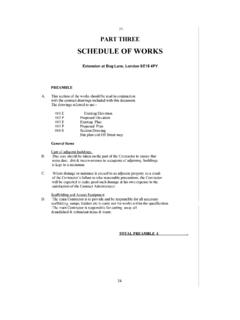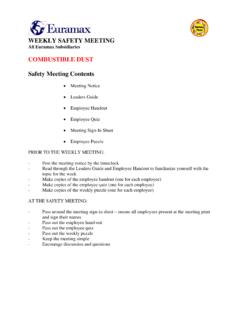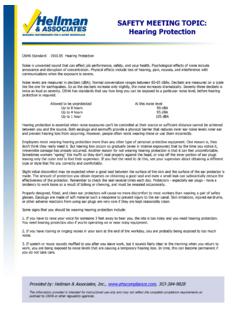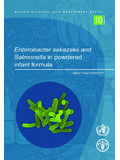Transcription of Meeting Part M and designing Lifetime Homes
1 Meeting part Mand designing LifetimeMeeting part Mand designing Lifetime HomesEdited by Caitriona Carroll, Julie Cowans and David Darton JRROWNTREEFOUNDATIONJOSEPHM eeting part M and designing Lifetime HomesThe Joseph Rowntree Foundation has supported thisproject as part of its programme of research andinnovative development projects, which it hopes willbe of value to policy makers and practitioners. Thefacts presented and views expressed in this report,however, are those of the authors, and notnecessarily those of the Foundation. Joseph Rowntree Foundation 1999 All rights byJoseph Rowntree FoundationThe Homestead40 Water EndYork YO30 6 WPTel: 01904 629241 Website: 1 85935 051 8 Price by Adkins DesignPrinted by ColorworksPrinted on recycled paperContentsForeword by Nick Raynsford MP4 Section 1 Introduction 5 Section 2 part M and Lifetime Homes requirements13 Section 3 Working plans25 References and further reading36 Index36 Foreword4 Building Regulations, for some years, have required new public buildings to be accessible to everyoneincluding those who are frail or disabled, but this did not apply to housing.
2 Now we are extending part M of the Building Regulations to make all new Homes more accessible and new regulations and Approved Document were drawn up following extensive consultation withthose involved with housing standards, with organisations representing disabled people, with the housebuilding industry and with many other interested revised regulations published in October 1998 allow time for the industry to adjust to the newregulatory requirements. But from October 1999 new Homes must meet the new regulations. Thisguide from the Joseph Rowntree Foundation is therefore very timely. I hope that its clear exposition ofthe new regulations will be helpful to all those involved in developing Britain s future guide also highlights the benefit of a little extra thought and care that needs to go into housingdesign in order to add the flexibility and adaptability found in Lifetime Homes . A number of localauthorities also encourage use of Lifetime home standards, and house builders may also wish to gobeyond part M, as a minimum regulatory standard, as they strive for implementation of the part M regulations will improve the accessibility and convenience of newhousing for everyone and Lifetime Homes will help to make Homes even more adaptable to long-termneeds.
3 Homes built to these standards can help to reduce future costs either for adaptations or forresidential care. Lifetime home standards in particular offer clear lifestyle benefits that Homes built inearlier decades will not wish everyone success in creating housing that Britain will be proud of in the years ahead. I am pleasedto commend this guide as a very valuable and helpful tool in this Raynsford MPConstruction MinisterMeeting part M and designing Lifetime HomesSection 1 IntroductionAchieving part M, Lifetime Homes and Housing Corporation Scheme Development Standards6 Meeting part M regulations and Lifetime Homes accessibility requirements8 The Lifetime Homes standards12It is generally accepted that Homes should be built to be accessible for all people, including young or old,single or in families, nondisabled or disabled. When designing new Homes , it is now often necessary totake account of three sets of requirements. The first is part M of the Building Regulations that hasrecently been extended to include all new Homes .
4 The second is the Housing Corporation s SchemeDevelopment Standards, which all housing funded with Housing Corporation money must meet. Thethird is Lifetime Homes standards, which many commissioning clients and local authorities now require. The design solutions for all three sets of requirements are broadly similar. The Lifetime Homesstandards and the Scheme Development Standards go a little further than Building Regulations in theirrequirements for adaptability and flexibility to be designed into the home . As these additions are minor,it seems sensible to design Homes which achieve all of these requirements, and are thus universal intheir appeal and guide sets out in simple terms what the Building Regulations and Lifetime Homes standards summary tables in this introduction also indicate which of the Housing Corporation SchemeDevelopment Standards will be met when designing Lifetime and builders may simply wish to ensure that their plans meet Lifetime Homes standards.
5 Ifthey do, then all of the part M Building Regulations, and relevant parts of the Housing CorporationScheme Development Standards will have been met.* But there are other reasons why designing new Homes to the Lifetime Homes standards makes Homes include a number of attractive features that will differentiate them from the existinghousing stock. These will provide the people who live in them with many advantages, and will giveprivate builders of new Homes a marketing edge in relation to the second-hand stock with which theycompete. Because Lifetime Homes will be suitable for older people (whose numbers are increasingrapidly) and for the vast majority of disabled people, as well as the non-disabled person, they will have awider market of potential buyers and residents, probably increasing their value and the ease with whichthey can be re-sold. 6 Meeting part M and designing Lifetime HomesAchieving part M, Lifetime Homes and Housing * But please note that it is important to meet the part M dimensions specified to each side of the WC bowl in entrance level WCs (diagrams 10aand 10b).
6 The Lifetime Homes standards for houses of three bedrooms or more require full side transfer from at least one side of the this documentFollowing this introduction are two tables that summarise and simplify the various requirements. Thefirst table brings together the information necessary to see at a glance what needs to be achieved tomeet the part M Building Regulations. Alongside this we present some of the (very similar) LifetimeHomes requirements relating to accessibility (which have been revised and clarified after consultationsince they were originally published in 1997). The table also shows the relevant Housing CorporationScheme Development Standards that will be covered by Meeting Lifetime Homes requirements,although it is recommended that the latest edition of the Scheme Development Standards is alsoreferred to. The second table sets out the full Lifetime Homes standards for reference. Homes that meet all thestandards are entitled to be designated Lifetime Homes .
7 They will also meet the part M BuildingRegulations, the relevant parts of the Housing Corporation Scheme Development Standards as indicatedin the table, and the requirements of most local authorities for accessible 2 provides illustrated examples and technical details on Meeting part M regulations and LifetimeHomes standards. Special attention is given to accessible thresholds and to entrance level WCs, whichhave concerned some housebuilders. Section 3 includes examples of house plans that not only meet part M requirements but also meetLifetime Homes standards. These demonstrate possible solutions for different types of home , but arenot blueprints - with a little thought it is easy to incorporate the regulations and standards into manydifferent situations. Finally, an index is provided for quick part Mand designing Lifetime Homes Corporation Scheme Development StandardsMeeting part M regulations and Lifetime 8 Meeting part M regulations and Lifetime Homes accessibility requirementsElements of accessibility required by part MPart M requirements (by Building Regulations paragraph) Lifetime Homes standardsHousing Corporation Scheme Development Standards (3rd Edition) met if LTH criterion adopted(E = essential, R = recommended)The approach to the house should be wide enough Paragraphs and E for wheelchair users, even when there is a parked carAn additional 900mm width must be added to the space for a carThe car parking space must be capable (requires actual provision at the of enlargement to 3300mm width (generally by outset rather than provision for having a 900mm path or garden strip adjacent later enlargement)to the 2400mm space for a car)
8 The approach should not be too steep, Paragraphs and 2relevant parts of Eideally it should be levelIf the plot gradient is less than 1:20 then no part of the approach mustAs for part Mbe steeper than 1:20. If the plot gradient is between 1:15 and 1:20, thenindividual slopes of 5m or less may have gradients up to 1:12 and individual slopes 5 to 10m in length may have gradients up to 1:15.*Paths should be at least 900mm accessible threshold at entrance level shouldParagraph 4brelevant parts of Ebe providedWhere unavoidable, maximum 15mm upstand is permitted. Detailed As for part Mguidance is in a separate industry guide available from The StationeryOfficeDoorways and corridors should be wide enough Paragraph 6to allow wheelchair users to manoeuvre into The entrance door must always be at least 775mm in width of the doorways and hallways should Eand out of roomsInternal doorways and corridors should conform to the following table:conform to the details given in the previous Ecolumn, except that when the approach is not Doorway clear openingCorridor/passageway head-on and the corridor/passageway width is width (mm) width (mm)only 900mm, then the doorway clear opening 750 or wider 900 (when approach head-on)width should be 900mm rather than 800mm.
9 The750 1200 (when approach not head-on)clear opening width of the front door should be 775 1050 (when approach not head-on)800mm. There should be 300mm to the side of 800 900 (when approach not head-on)the leading edge of doors on the entrance stairs in blocks of flats should provide Paragraph Eease of access to ambulant disabled peopleUniform rise not more than 170mmAs for part MUniform going not less than 250mmHandrails extend 300mm beyond top and bottom stepHandrail height 900mm from nosingsMeeting part M and designing Lifetime Homes Homes accessibility requirements9 Elements of accessibility required by part MPart M requirements (by Building Regulations paragraph) Lifetime Homes standardsHousing Corporation Scheme Development Standards (3rd Edition) met if LTH criterion adoptedA stepped change of level within an entrance Paragraph of level within a storey are not n/astorey should allow ease of access to ambulant Flight clear width 900mmcovered under the Lifetime Homes standardsdisabled peopleSuitable continuous handrail on each side where there are more than three risesRises and goings accord with part K of the Building RegulationsWheelchair users should be able to use any lift Paragraph Eprovided in a block of flatsClear landing entrances 1500x1500mmAs for part M but the minimum internal EMin.
10 Internal lift car dimensions 900x1250mmdimensions for the lift should be 1100x1400mmLift controls between 900 and 1200mm from the floor and 400mmfrom the lift s internal front wall. There should be tactile controlbuttons, and visual and audible storey indicators for blocks of more than three storeysSwitches and sockets should be at Paragraph R a convenient height for allSwitches and socket outlets for lighting and other equipment in As for part M(switches etc. at 900-1200mm)habitable rooms between 450 and 1200mm from finished floor R (sockets at 450-600mm)All Homes should have an entrance level WC Paragraph Ewhich is usable by a wheelchair userClear usable space between front of WC bowl and opposite For dwellings with three or more bedrooms, Rwall/door 750mm min. or on one level, the WC must be fully accessible. RDistance from central line of cistern and adjoining wall 450mm wheelchair user should be able to close theWhere oblique access provided, there should be 250mm min.
